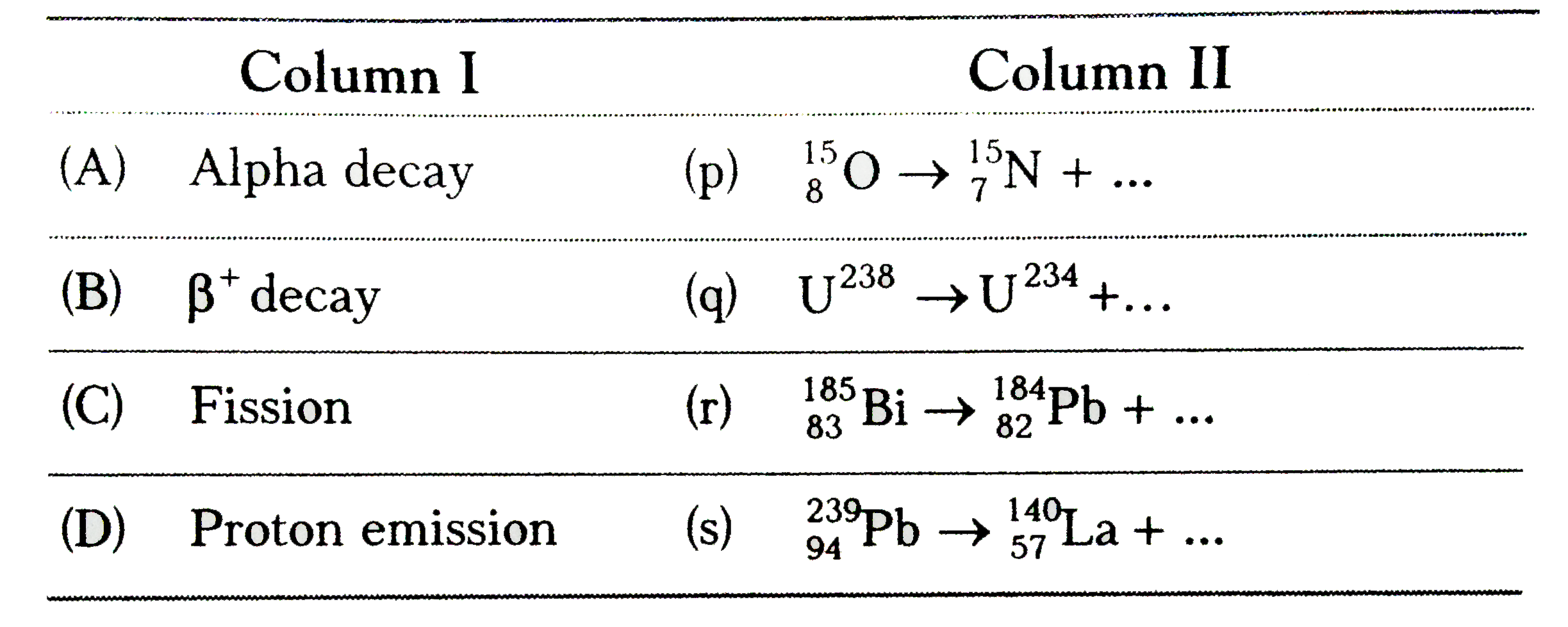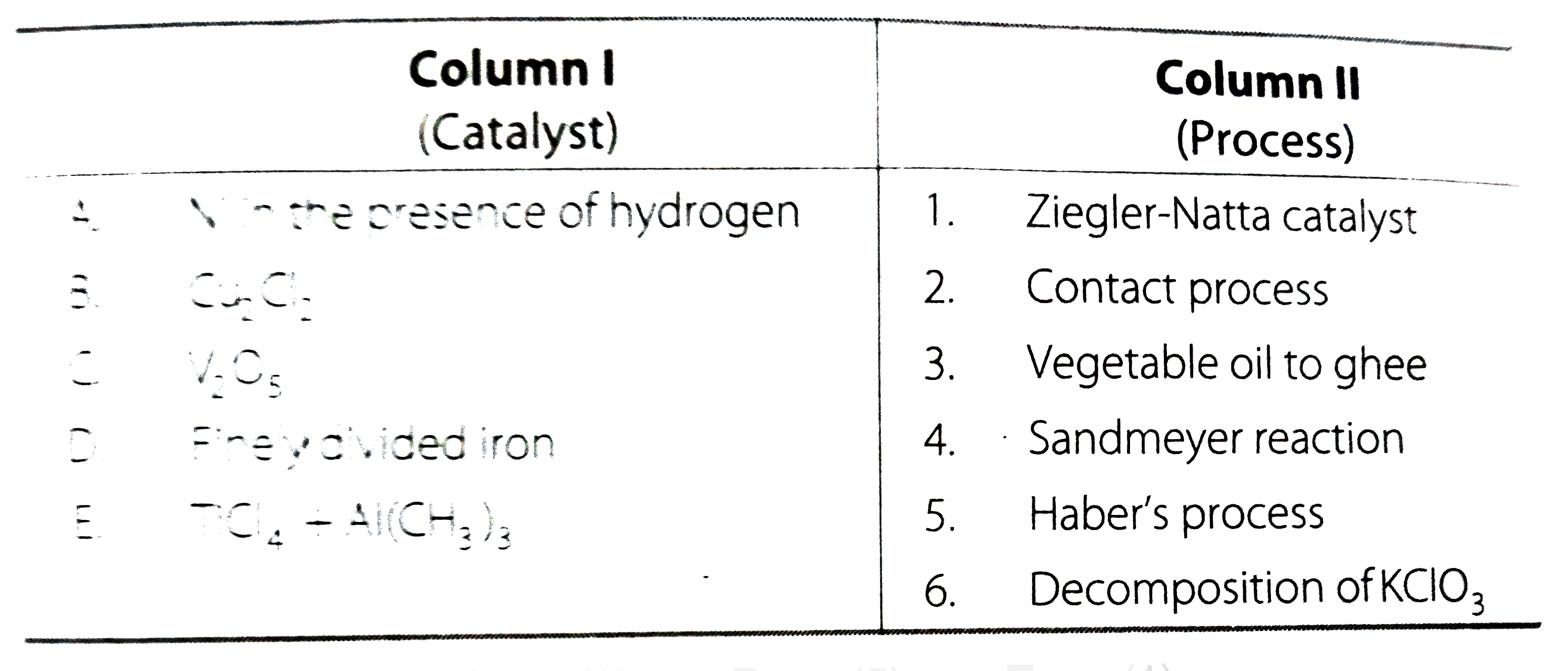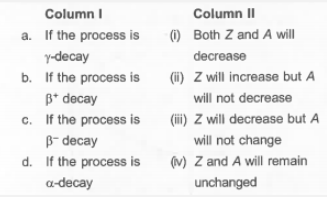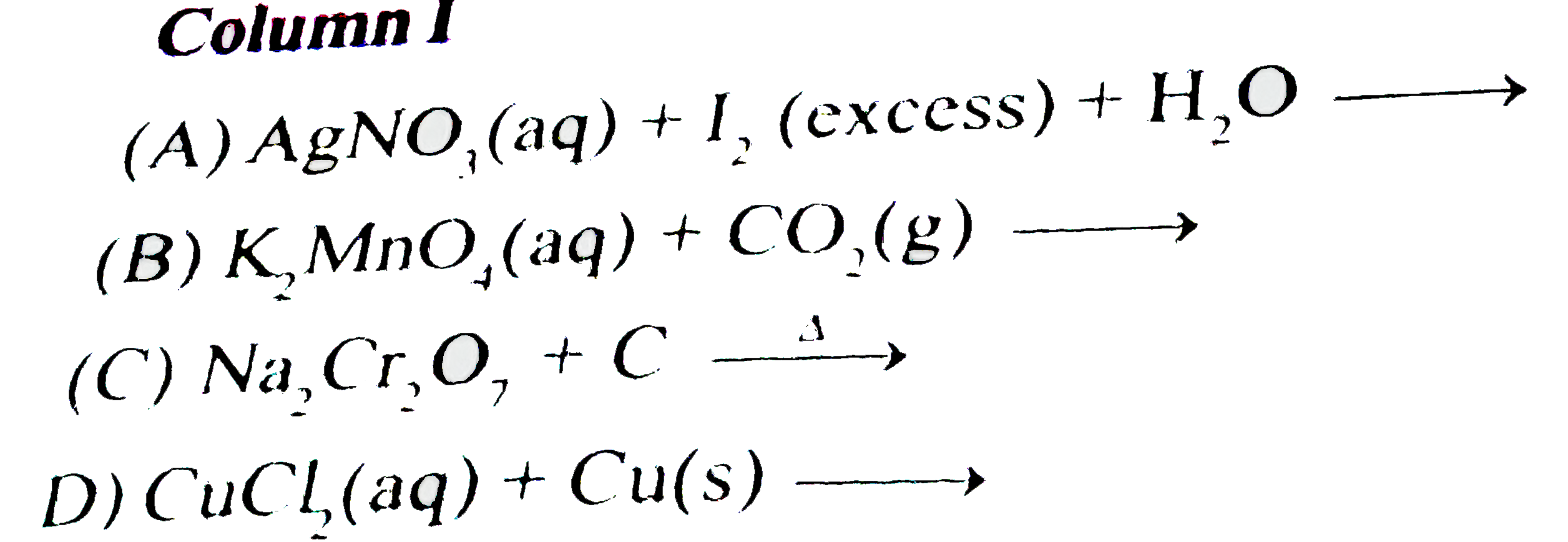Match the Clumn I of the nuclear processes with Column II containing parent nucleus and one of the end products of each process.

The correct Answer is:(A→q;B→p;C→s;D→r)
In α decay mass number decrease by 4 and atomic number decrease by 2.
in β+ decay mass number remains unchanged while atomic number decrease by 1.
in fission parent nucleus break into almost two equal fragments in proton emission both mass number and atomic number decrease by 1.
Topper's Solved these Questions
- NUCLEIBOOK - DC PANDEY ENGLISHCHAPTER - NUCLEIEXERCISE - C MADICAL ENTRANCES GALLERY
46 Videos
- NUCLEIBOOK - DC PANDEY ENGLISHCHAPTER - NUCLEIEXERCISE - B Medical entrance special format questions
9 Videos
- MODERN PHYSICS - 2BOOK - DC PANDEY ENGLISHCHAPTER - MODERN PHYSICS - 2EXERCISE - Level 2 Subjective
10 Videos
- RAY OPTICSBOOK - DC PANDEY ENGLISHCHAPTER - RAY OPTICSEXERCISE - Medical entrance gallary
76 Videos
Similar Questions
Knowledge Check
Match the terms given in column I with their physiological processes given in column II and choose the correct answer.
 AA-(iii),B-(v),C-(iv),D-(ii),E-(i)BA-(iii),B-(iv),C-(i),D-(v),E-(ii)CA-(i),B-(iii),C-(ii),D-(v),E-(iv)DA-(iii),B-(i),C-(iv),D-(v),E-(ii)
AA-(iii),B-(v),C-(iv),D-(ii),E-(i)BA-(iii),B-(iv),C-(i),D-(v),E-(ii)CA-(i),B-(iii),C-(ii),D-(v),E-(iv)DA-(iii),B-(i),C-(iv),D-(v),E-(ii)
Match the catalysts (column I) with products (Column II)

View SolutionMatch the catalyst given in Column I with the processes given in Column II.

View SolutionColumn I gives some devices and Column II gives some processes on which the functioning of these devices depend. Match the devices in Column I with the processes in Column II and indicate your answer by darkening appropriate bubbles in the 4×4 matrix given in the ORS.

View SolutionMatch the terms given in Column I with their physiological processes given in Column II and choose the correct answer

View SolutionMatch the column in radioactive decay process of nucleus with atomic number Z and mass number A.

View SolutionMatch the reactions in Column I with nature of the reactions / type of the products in Column II.


View SolutionMatch the reactions in Column I with nature of the reactions / type of the products in Column II.

View Solution

_E01_339_Q01.png)
